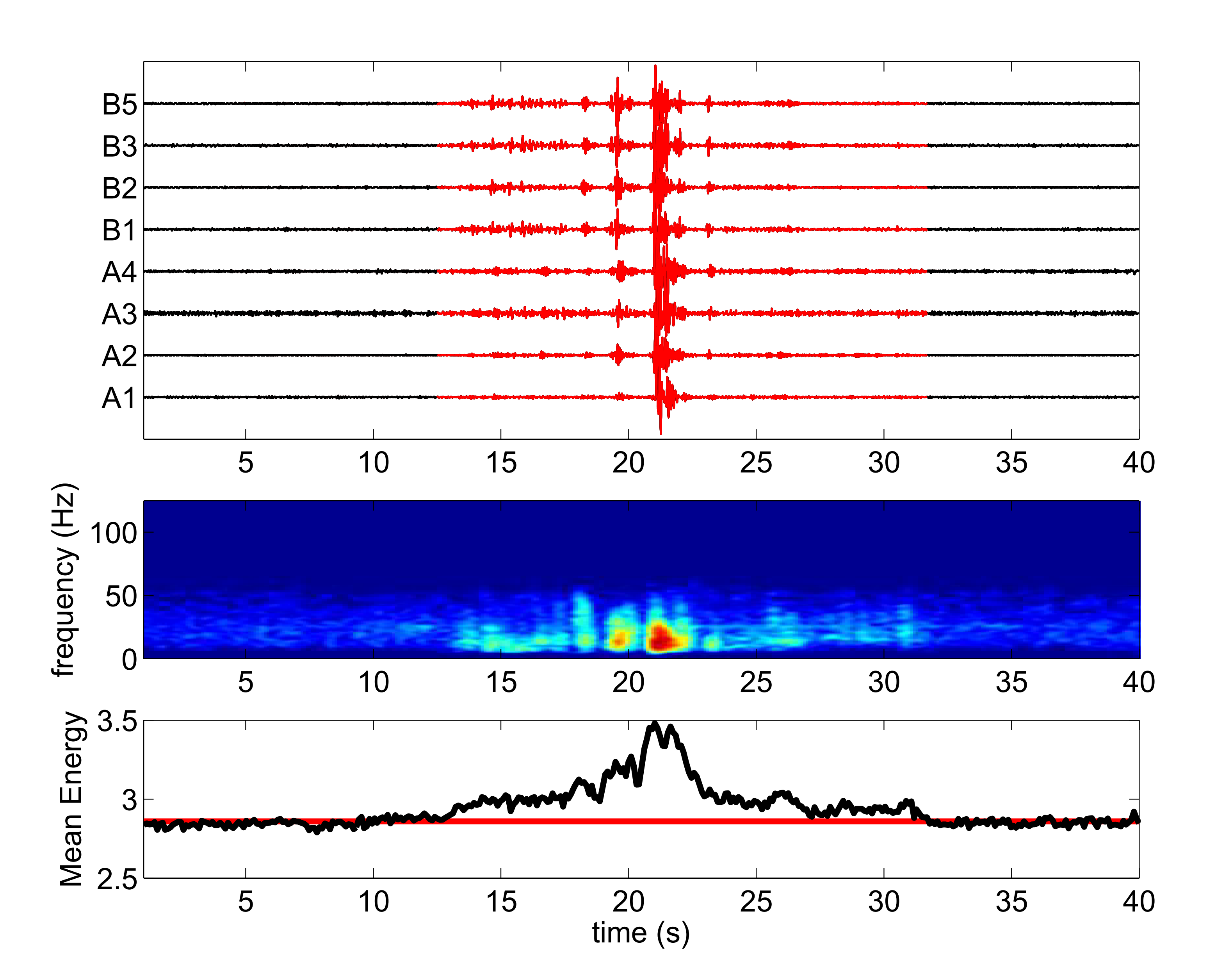1) Pseudo-automatic approach:
For the period 2009-2018, a pseudo-automatic approach is used to detect landslide seismic events. Events recorded at OMIV sites exhibit a wide variety of waveforms and usually have a low signal-to-noise ratio. Classic methods such as STA/LTA detectors perform poorly in those contexts. To detect a maximum of events, a detection algorithm based on the spectral content of the seismic signals has be designed and deployed at OMIV sites [Helmstetter et al., 2010]. Spectrograms are computed for each trace of each station (figure 1). Then the energy in all frequency bands at a given time is summed. This produces a pseudo-spectrogram (figure 1). A new event is detected when the pseudo-spectrogram amplitude rises above a threshold set manually. This spectral approach allows to increase significantly the signal-to-noise ratio, and hence the detection of small amplitude events.
 |
| Example of a seismic signal recorded at the La Clapière landslide, transformed into a spectrogram and a pseudo spectrograms. |
The identification of the sources is then done manually by operators. Criteria used to classify the data are the waveforms of the signals, the spectral content but also the location of the sources when possible. The data are processed every day, but the event catalogue is only disseminated (data centre, website) when the results have been validated by an operator.
2) Fully automated solution:
Starting 2018, a fully automated method based on machine learning algorithms is currently implemented in order to propose a standard classification (same procedure for all landslides), propose statistical criteria to document the accuracy of the classification, and decrease the computation time.
Results using the “random forest” classifier show excellent rates of good identification at many landslides, such as for instance at the Super-Sauze landslide [Provost et al., 2017]. The solution is gradually being implemented to operate at all OMIV unstable slopes.

